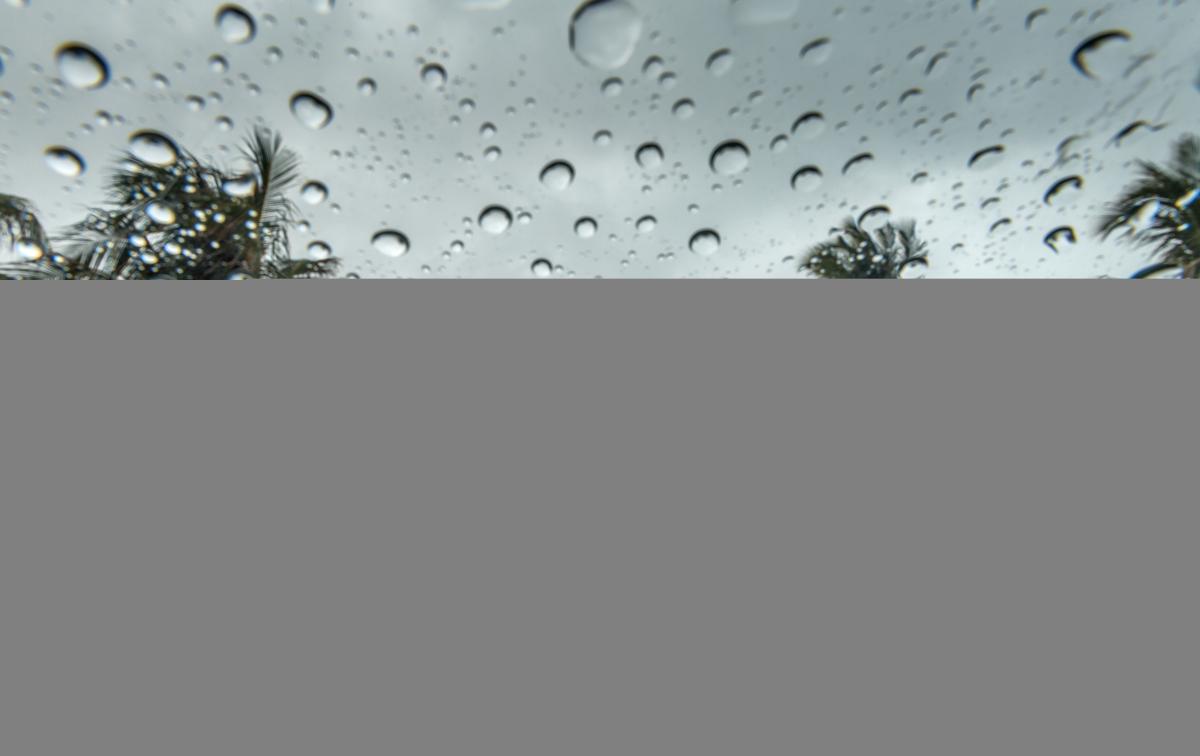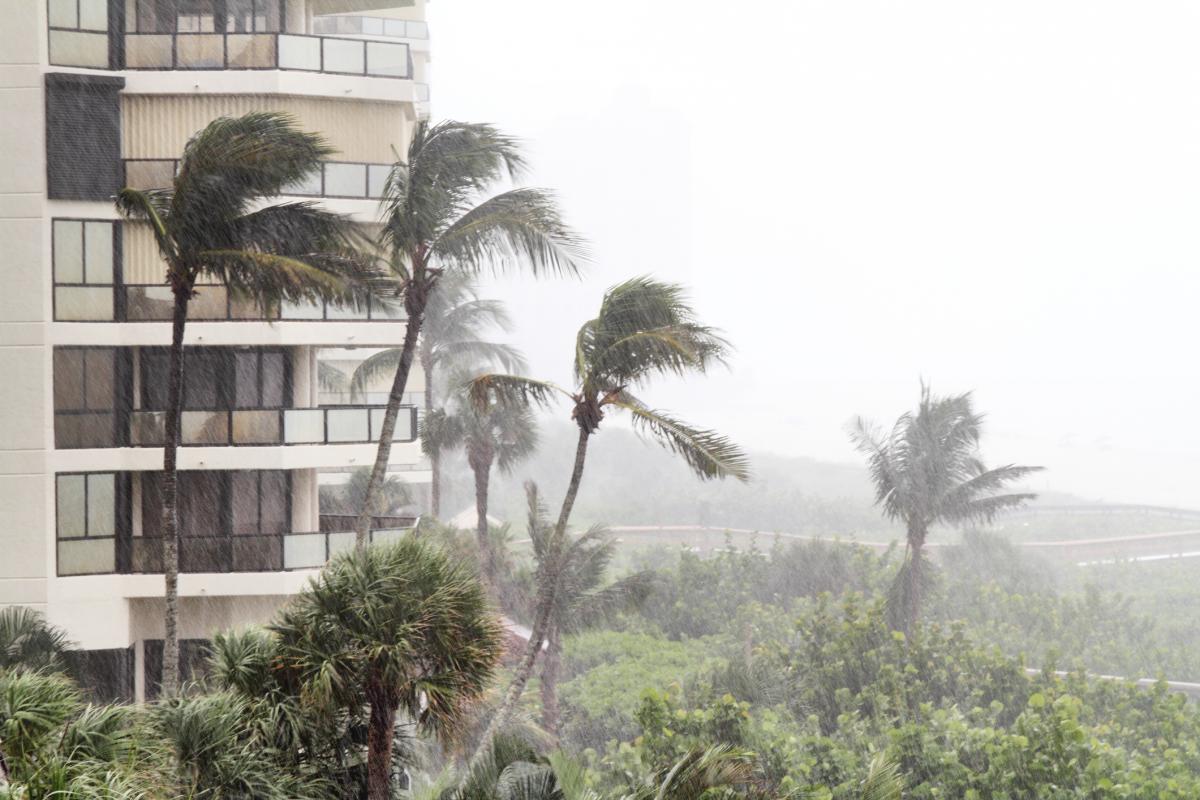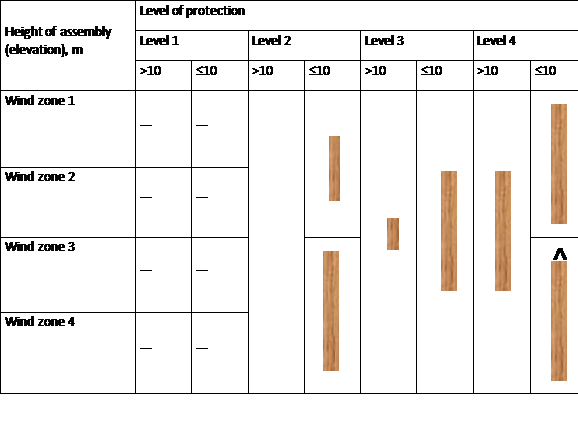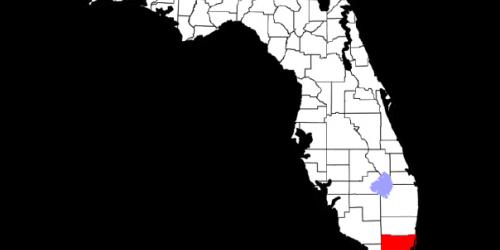Howling wind pushes against buildings, causing their elements to yield due to the strain

Debris is spun into the storm and collides with glass. Crashing, breaking, and deformation are all around, as Mother Nature batters with winds and driving rain. This is an all too common visual in severe windstorms, called cyclones, hurricanes, or typhoons, depending on the region of the world.
How does one remain safe during such an event?
First and foremost, follow any and all evacuation guidance provided by authorities. The structures in the path of a severe storm do have a chance of surviving if building codes and severe windstorm-resistant standards are incorporated during design or renovation. The United States of America (U.S.A.) has had severe windstorm test methods and codes in place since shortly after Hurricane Andrew devastated South Florida in 1992. Those methods have evolved into the present day, internationally accepted ASTM1 E1886 and E1996 documents for hurricane testing. These standards have proven their worth when products designed to comply with them are used. The concept and levels of performance have helped buildings effectively weather many storms over almost 30 years, but they are not the only global standards for windstorms.
The International Organization on Standardization (ISO)2 document 16932, “Glass in building—Destructive-windstorm-resistant security glazing—Test and classification,” was confirmed with changes in 2019 through the ISO Technical Committee 160 Glass in Building, subcommittee 2, working group 7. The original standard was published in 2007, and this is the third edition of the standard with significant updates being incorporated. The two major areas of modification were the creation and update of the hazard classifications and modified missile-impact weight requirements for previously defined locations on the building.
The document is similar to ASTM E1886 and E1996 in that it requires impact of the glazing by a propelled free-flying timber or ball bearings followed by pressure cycles meant to simulate natural threats from destructive windstorm events. Classifications derived from this standard are based on the potential hazard to human life versus wind-load categories. The glazing of the building envelope is intended to stay intact but may crack, making laminated glass a premier choice for this type of protection.
The missile, which is a timber or 10 ball bearings, is propelled from an air driven device and aimed to strike the glazing in specified locations. In no instance may an opening be created through which a 76-mm diameter solid sphere could pass, and no tears longer than 125 mm are permitted. The ability of laminated glass to thwart this impact without penetration of the missile or significant tearing is due in large part to the engineering of the interlayer formulation, the configuration, and type of glass.
Like ASTM E1886 and E1996, full systems are tested in triplicate
There are no changes to the missile sizes and air-pressure cycles or sequence from previous versions. However, diagrams have been added to the procedure to clearly define the impact locations (center and corner) for large missiles and the geometries and overlaps for small missile testing (3 impact sets consisting of 10 ball bearings for each set). Language has been added to the document in the case of edge release or pull out. If this occurs, the test is not classified but repeated using another sample.
Classification depends primarily on level of potential hazard to human life, wind zone, and opening height above grade
The levels of protection are defined as follows: Level 1 is advised for unprotected buildings and other structures, which are expected to have low hazard to human life in cyclones and other severe storms. Buildings in this level may include, but are not restricted to, agricultural houses, temporary facilities and storage facilities.
Level 1 is advised for unprotected buildings and other structures, which are expected to have low hazard to human life in cyclones and other severe storms. Buildings in this level may include, but are not restricted to, agricultural houses, temporary facilities and storage facilities.
 Level 2 is advised for protection of buildings and other structures which are expected to have moderate hazard to human life in cyclones and other severe storms. Buildings in this level may include, but are not restricted to, houses, commercial and industrial buildings.
Level 2 is advised for protection of buildings and other structures which are expected to have moderate hazard to human life in cyclones and other severe storms. Buildings in this level may include, but are not restricted to, houses, commercial and industrial buildings.
 Level 3 is advised for protection of buildings and other structures which are expected to have a substantial hazard to human life in cyclones and other severe storms. Buildings in this level may include, but are not limited to, major office buildings, schools, shopping centres, hotels and other buildings and structures where a significant number of people congregate in one area.
Level 3 is advised for protection of buildings and other structures which are expected to have a substantial hazard to human life in cyclones and other severe storms. Buildings in this level may include, but are not limited to, major office buildings, schools, shopping centres, hotels and other buildings and structures where a significant number of people congregate in one area.
 Level 4 is advised for enhanced protection of essential facilities. Buildings in this level may include, but are not limited to, hospitals and other health care facilities, fire, rescue, ambulance, and police stations, and buildings and other structures having critical national defence functions or designated as storm shelters during a severe storm.”
Level 4 is advised for enhanced protection of essential facilities. Buildings in this level may include, but are not limited to, hospitals and other health care facilities, fire, rescue, ambulance, and police stations, and buildings and other structures having critical national defence functions or designated as storm shelters during a severe storm.”
Wind zones are similar to those described in ASTM E1996, with zone 1 wind speeds between 50 m/s and 55 m/s, zone 2 between 55 and 60 m/s, zone 3 between 60 and 65 m/s, and zone 4 greater than 65 m/s.
The missiles required are based on the wind zone in conjunction with the level of protection and the location of the opening (height-wise) on the building
Level 1 does not require impact resistant products for any wind speed at any level of opening. Level 2 requires small missile steel ball bearings when the fenestration is less than 10 m and the 2-kg timber for wind zone 1 and 2 when the fenestration is at 10 m or less. For wind zones 3 and 4., 4-kg timber is required when the opening is 10 m or less. Saflex® and Vanceva® PVB interlayers of 1.52 mm or greater in combination with annealed, heat-strengthened, or tempered glass tend to pass level 2, while basic laminated safety glass with 0.38-mm or 0.76-mm Saflex or Vanceva interlayers can be readily used for level 1.
Level 3 saw the biggest change from the original publication in that it was modified from requiring only the small ball bearings to requiring impact with a 1-kg small timber when the fenestration is higher than 10 m. The remainder of the table is unchanged, with the larger 4-kg timber being fired at 15 m/s when the fenestration is less than 10 m from grade for wind zones 1,2, and 3 and at 24 m/s for wind zone 4. When the large missile is utilized at 15 m/s, Saflex and Vanceva products of 1.91 mm or greater are needed to resist the missile and survive the cyclic portion of the test. For the large missile at 24 m/s, a combination of Saflex interlayers with a minimum thickness of 4.45 mm can be used.
It should also be noted that a significant difference between ISO 16932 and ASTM E 1996 is that the large 4-kg timber at 15 m/s is required for Level 4 protection even when the fenestration is above 10 m. The ASTM document only requires small missile testing for these types of applications. These missiles are graphically depicted in the table below, with the “^” indicating a faster speed for the large 4-kg timber.

Required missilies for testing for classification

In general, the ISO 16932 document covers severe windstorms generating wind speeds ≥ 50 m/s and offers a classification for protection based on building occupancy and potential hazards to humans. It can be referenced in any area that may have severe wind that potentially can lift debris and cause impact damage. The requirement for larger missiles when fenestration is located greater than 10 m above grade is a significant difference from the current ASTM E1996 document. However, the test methodology, pass-fail criteria, and building height delineations (greater and less than 10 m) are the same. The ASTM and ISO standards both give guidance on the testing and qualification of glazing products for severe wind events. Neither standard describes or considers all aspects or variations seen in a storm, and they are meant to provide a uniform level to compare product performance. No product tested to these criteria can be deemed cyclone-, hurricane-, or typhoon-proof. They can be classified to provide a level of protection based on the criteria presented in the test and compared to other products tested in the same manner using the same criteria.











